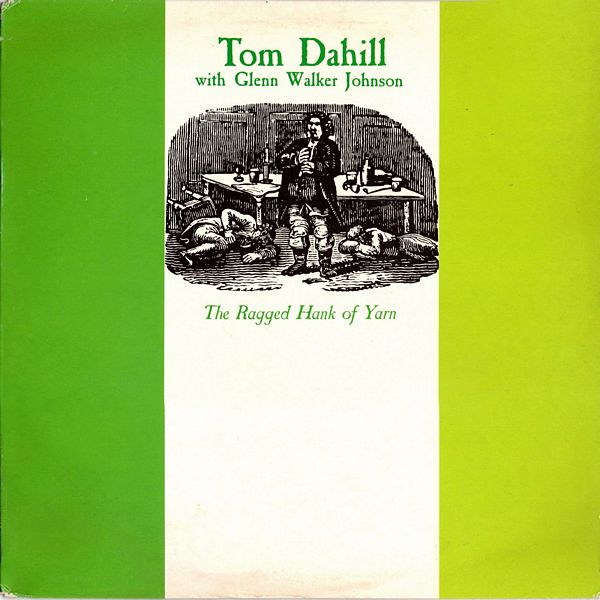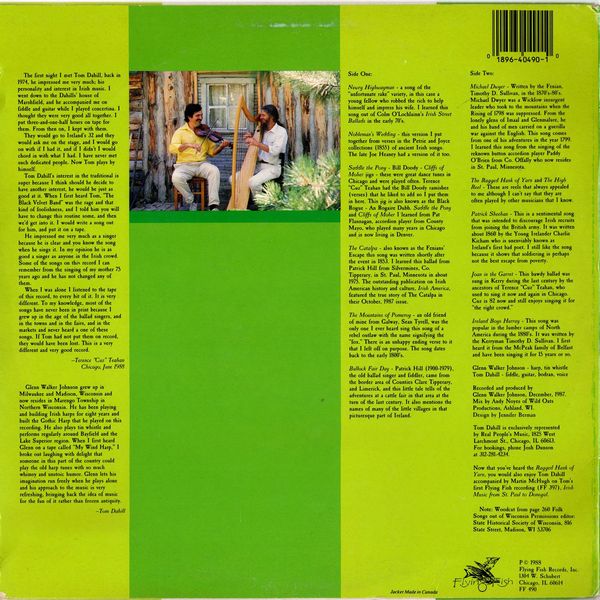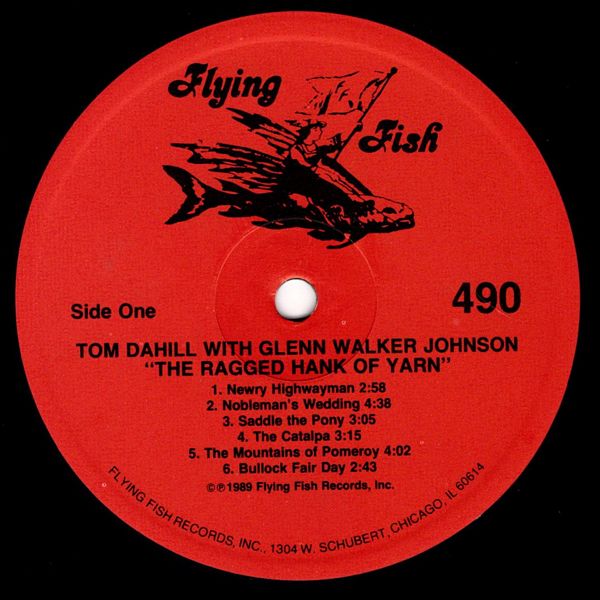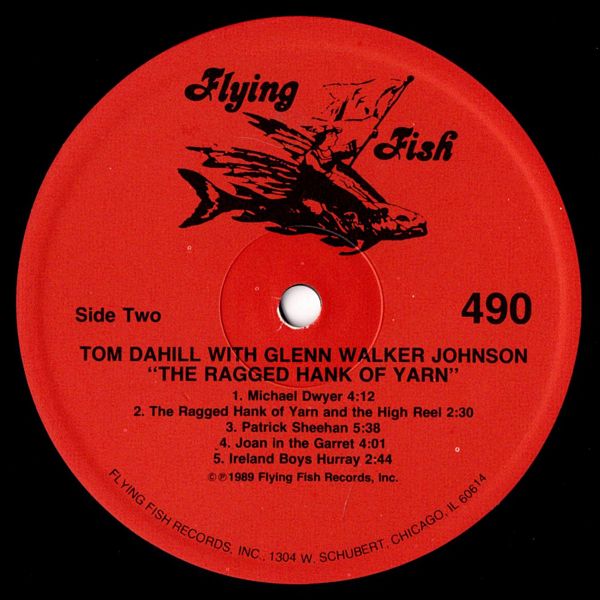
 |



|
Sleeve Notes
Newry Highwayman — a song of the "unfortunate rake" variety, in this case a young fellow who robbed the rich to help himself and impress his wife. I learned this song out of Colm O'Lochlainn's Irish Street Ballads in the early 70's.
Nobleman's Wedding — this version I put together from verses in the Petrie and Joyce collections (1855) of ancient Irish songs. The late Joe Heaney had a version of it too.
Saddle the Pony/Bill Doody/Cliffs of Moher jigs — these were great dance tunes in Chicago and were played often. Terence "Cuz" Teahan had the Bill Doody ramishes (verses) that he liked to add so I put them in here. This jig is also known as the Black Rogue — An Rogaire Dubh. Saddle the Pony and Cliffs of Moher I learned from Pat Flannagan, accordion player from County Mayo, who played many years in Chicago and is now living in Denver.
The Catalpa — also known as the Fenians' Escape this song was written shortly after the event in 1853. I learned this ballad from Patrick Hill from Silvermines. Co. Tipperary, in St. Paul, Minnesota in about 1975. The outstanding publication on Irish American history and culture, Irish America, featured the true story of The Catalpa in their October, 1987 issue.
The Mountains of Pomeroy — an old friend of mine from Galway, Seán Tyrell, was the only one I ever heard sing this song of a rebel outlaw with the name signifying the "fox." There is an unhappy ending verse to it that I left off on purpose. The song dates back to the early 1800's.
Bullock Fair Day — Patrick Hill (1900-1979), the old ballad singer and fiddler, came from the border area of Counties Clare Tipperary, and Limerick, and this little tale tells of the adventures at a cattle fair in that area at the turn of the last century. It also mentions the names of many of the little villages in that picturesque part of Ireland.
Michael Dwyer — Written by the Fenian Timothy D. Sullivan. in the 1870s-80s. Michael Dwyer was a Wicklow insurgent leader who took to the mountains when the Rising of 1798 was suppressed. From the lonely glens of Imaal and Clenmalure. he and his band of men carried on a guerilla war against the English. This song comes from one of his adventures in the year 1799. I learned this song from the singing of the reknown button accordion player Paddy O'Brien from Co. Offally who now resides in St. Paul, Minnesota.
The Ragged Hank of Yarn and The High Reel — These are reels that always appealed to me although I can't say that they are often played by other musicians that I know.
Patrick Sheehan — This is a sentimental song that was intended to discourage Irish recruits from joining the British army. It was written about 1860 by the Young Irelander Charlie Kicham who is unenviably known as Ireland's first bad poet. I still like the song because it shows that soldiering is perhaps not the best escape from poverty.
Joan in the Garret — This bawdy ballad was sung in Kerry during the last century by the ancestors of Terence "Cuz" Teahan, who used to sing it now and again in Chicago. Cuz is 82 now and still enjoys singing it for "the right crowd."
Ireland Boys Hurray — This song was popular in the lumber camps of North America during the 1880's. It was written by the Kerryman Timothy D. Sullivan. I first heard it from the McPeak family of Belfast and have been singing it for 15 years or so.
The first night I met Tom Dahill, back in 1974, he impressed me very much; his personality and interest in Irish music. I went down to the Dahills' house of Marshfield, and he accompanied me on fiddle and guitar while I played concertina. I thought they were very good all together. I put three-and-one-half hours on tape for them. From then on, I kept with them. They would go to Ireland's 32 and they would ask me on the stage, and I would go on with if I had it, and if I didn't I would chord in with what I had. I have never met such dedicated people. Now Tom plays by himself.
Tom Dahill's interest in the traditional is super because I think should he decide to have another interest, he would be just as good at it. When I first heard Tom, "The Black Velvet Band" was the rage and that kind of foolishness, and I told him you will have to change this routine some, and then we'd get into it. I would write a song out for him, and put it on a tape.
He impressed me very much as a singer because he is clear and you know the song when he sings it. In my opinion he is as good a singer as anyone in the Irish crowd. Some of the songs on this record I can remember from the singing of my mother 75 years ago and he has not changed any of them.
When I was alone I listened to the tape of this record, to every bit of it. It is very different. To my knowledge, most of the songs have never been in print because I grew up in the age of the ballad singers, and in the towns and in the fairs, and in the markets and never heard a one of these songs. If Tom had not put them on record, they would have been lost. This is a very different and very good record.
— Terence "Cuz" Teahan Chicago, June 1988'
Glenn Walker Johnson grew up in Milwaukee and Madison. Wisconsin and now resides in Marengo Township in Northern Wisconsin. He has been playing and building Irish harps for eight years and built the Gothic Harp that he played on this recording. He also plays tin whistle and performs regularly around Bayfield and the Lake Superior region. When I first heard Glenn on a tape called "My Wind Harp," I broke out laughing with delight that someone in this part of the country could play the old harp tunes with so much whimsy and unstoic humor. Glenn lets his imagination run freely when he plays alone and his approach to the music is very refreshing, bringing back the idea of music for the fun of it rather than frozen antiquity.
Tom Dahill